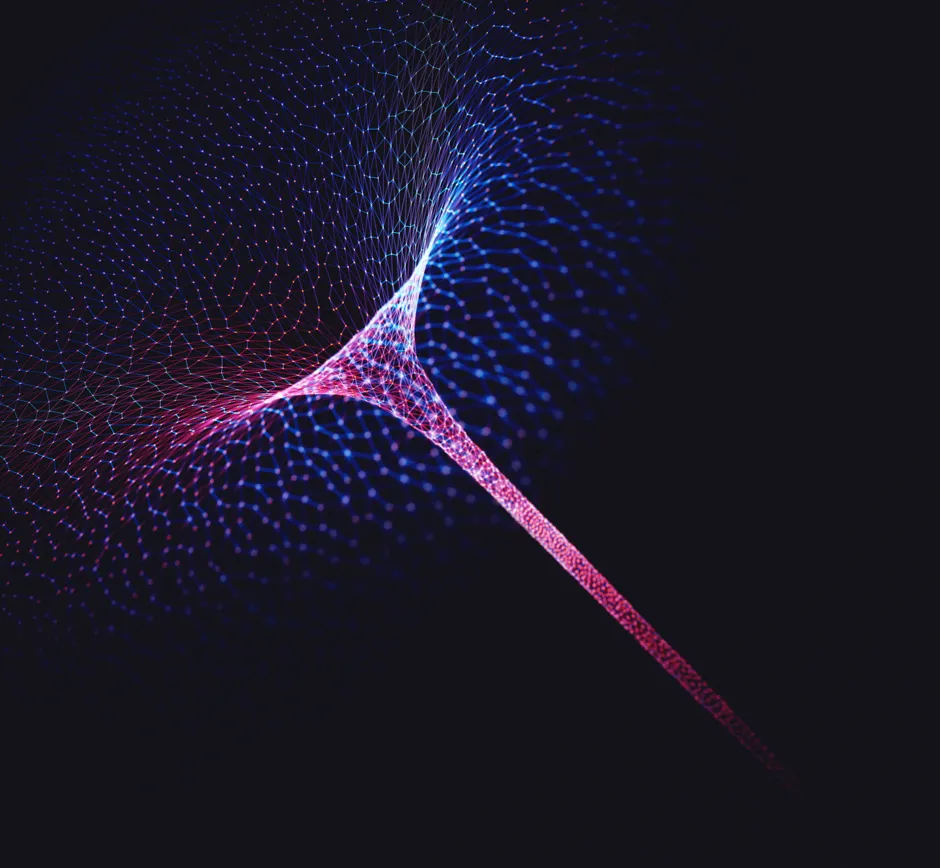As a professor of physics and astronomy, Janna Levin has contributed to our growing understanding of black holes. In her new book, Black Hole Survival Guide, she takes the reader on a journey through space and into the centre of a black hole. The fall involves crossing what is known as the event horizon: the edge of a black hole, the ‘point of no return’.
In this extract, the reader has approached the event horizon – crossing it is a certainty, the experience is an enigma…
A black hole is a solid disk of darkness from outside. But once you cross to the interior of the event horizon, you discover that you can still see out. You are not plunged in darkness. The event horizon poses no obstacle to the galactic luminosity raining down. Light drops right through the horizon, harbinger of distorted images.
The black hole is dark on the outside, but it can be bright on the inside.
Through the one-way window of the horizon, you view the Universe beyond. While there’s nothing you could do to halt your slide, you could for those brief moments look through the pane and watch the Universe evolve. Light from the galaxy that floods through the event horizon portrays a radically sped-up version of thousands or millions or billions of Earth years.
The light that spills into your eyes plays out the downfall of civilisations or paparazzi flashes of eons of exploding stars. As you fall, the hole’s throat narrows and seizes all of the transmitted luminescence into a focused bright whiteness. Like in a near-death experience, you see the light at the end of the tunnel. Only it’s a total death experience.
If we follow the mathematics to the brutal end, the general theory of relativity predicts that the black hole’s interior cinches, the spacetime curving calamitously and unmitigated, to form a singularity where all paths terminate. A singularity might as well be a cut in spacetime. The material of the original star flies into that rip and is blotted out of existence. Not only is the actual imploded substance behind the event horizon irrelevant to the structure of the black hole, it’s gone.
You plummet inevitably into that singularity. It will be a rocky ride as your matter perturbs the environment and the spacetime undulates.

As you fall toward the singularity, you are badly broken. The part of your body closest to the singularity is accelerated drastically faster than the part of your body farthest from the singularity, stretching you miserably. Simultaneously, your overall anatomy is forced to converge toward that point, crushing you. In a microsecond, less time than it would take to blink your eye, you are simultaneously flayed, shredded, and pulverised to death.
Your organic matter is then pummelled, tattered, and inevitably shattered into elementary constituents. Ultimately, your fundamental bits spray toward the cut in spacetime and cease to be.
The rip leads to nowhere. The singularity is an end to space and time, an end to existence. There’s no future ahead once a thing gets crushed and pushed through the singularity. Death by singularity is the paramount existential death — the death of your fundamental particles, the removal from reality of you and your constituent stuff. Actual nonexistence.
Yet we don’t have to resign ourselves to this travesty or to the inevitability of singularities. Singularities, as they involve malefic infinities, deserve to be treated with great suspicion. They are such an anathema to the entire paradigm of the scientific pursuit of reality that essentially all physicists suspect general relativity ceases to be the complete physical description of gravity at such dramatic scales, the singular core a false prophecy.
Black holes with Prof Janna Levin
Join Janna Levin and BBC Science Focus Magazine LIVE for an online talk and Q&A on Thursday, 19 November at 7pm GMT.
Rephrased: the mathematics is telling us that the physical description offered by relativity is broken there. General relativity cannot be the whole story precisely because it predicts the singularity. The alternative to abandoning faith in relativity is much worse: the existence of singularities would mean the physical Universe is deeply and pathologically misbehaved.
Maybe in the black hole abyss, instead of a singularity there is some kind of leftover from all that infalling material, a quantum remnant at the catastrophically high energies and curvatures of the very centre of the hole. It’s conceivable that all of the matter that created the hole and subsequently fell into the hole is trapped in an as yet unknown state of quantum matter, that all of the subatomic particles — previously healthy constituents of a star, matter we think we understand pretty well — instead compress into less space than a trillion trillion times smaller than one hydrogen nucleus.
It’s also conceivable that it’s nonsense. There aren’t all that many supporters for the remnant hypothesis. As long as we’re succumbing to speculation, here’s a favourite: once inside of the black hole, maybe everything ruptures into a white hole, something like a new big bang into another part of the Universe, because black holes can be bigger on the inside than they are on the outside. Like Doctor Who’s TARDIS. There could be a whole other Universe inside that hole.
A black hole is a place, a location in spacetime, eerily dark and bare and empty. And yet, scientists have not been able to answer the seemingly simple question, ‘Where do we go if we fall in?’
Read more about black holes:
- Is there a wormhole hiding at the centre of the Milky Way?
- Can life exist around a black hole?
- Planet Nine could be a grapefruit-sized black hole, say astrophysicists
The mystery of the black hole interior imposed by the event horizon gives black holes a special cultural aura not permitted most astrophysical phenomena.
Regardless, you get crushed to death long before a remnant forms or a big bang occurs. Revising the singularity into something more sensible won’t save you. You will be mangled and granulated, but your scraps could be part of a greater ecosystem.
If your splinters are not blotted out of existence through a singularity, if your scraps could wait in the form of a jittering quantum remnant in the core of the black hole, incidental rubble will spill down with you, more errant space junk, mixing with any other debris accrued. The remnant persists indefinitely, a slim hope of a possible future. Or your elements will be shared with a new Universe, blown out into a big bang, reordered into generations of stars, some of them recycled finally into a microbial life-form on a new piece of dirt destined to fall into another black hole.
Janna's new book, Black Hole Survival Guide, is published by The Bodley Head on 12 November 2020.
In a special virtual lecture for BBC Science Focus, physicist Janna Levin will be taking us (safely) on a journey inside a black hole.
- Find out more about our event with Janna Levin
- Preorder your copy of Black Hole Survival Guidefrom Amazon UK, Bookshop and Foyles

